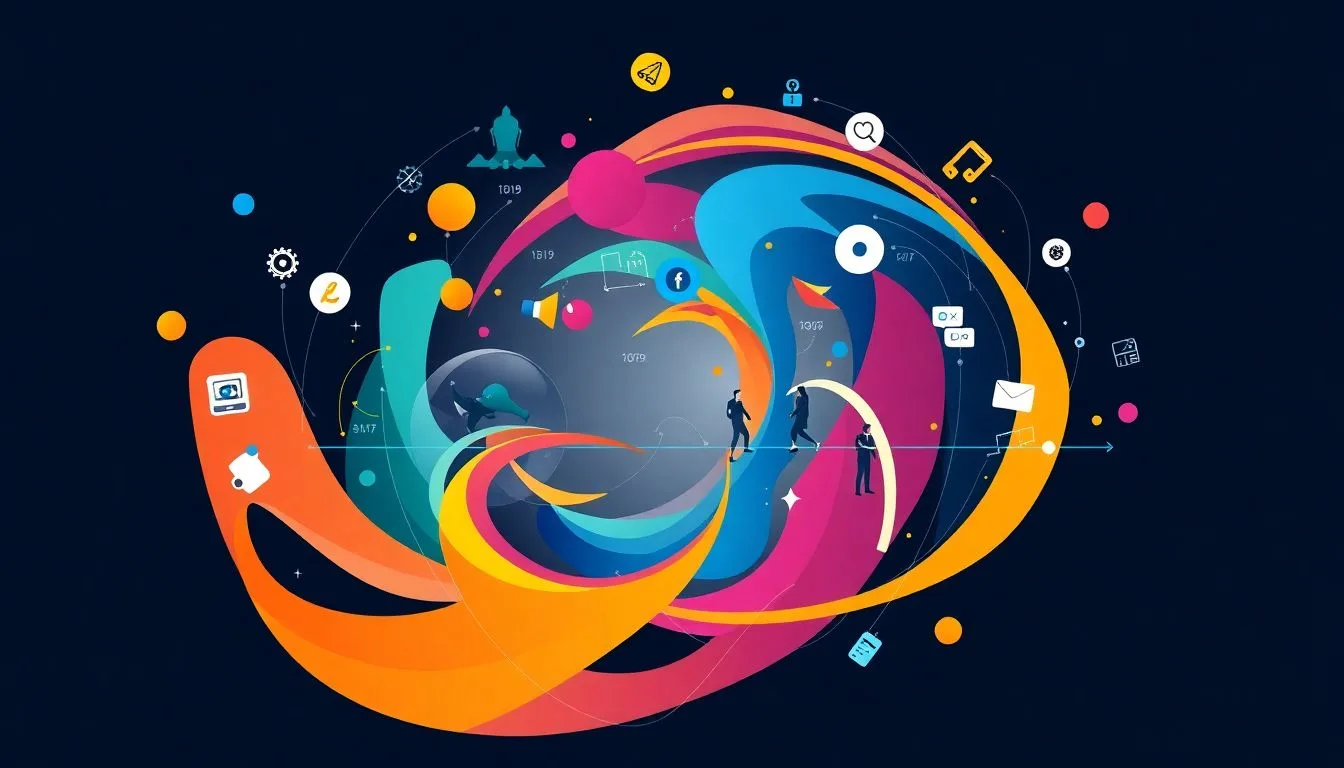Marketing has come a long way. Did you know that a single viral post on social media can reach millions of people in seconds? That’s in stark contrast to a newspaper advertisement from decades ago, which might’ve only reached a few thousand. The history of marketing showcases how businesses have adapted their strategies over the centuries to connect with customers.
Marketing began with simple announcements, evolved through various media, and now thrives in a digital landscape. This article will explore the key phases of marketing’s evolution and the forces driving these changes.
The Era of Traditional Marketing (Pre-1980s)
Print and Broadcast Dominance
In the early days, newspapers, magazines, radio, and television played a crucial role in marketing. Businesses relied heavily on these platforms to reach their audiences. For example, in the mid-20th century, advertising spending reached nearly $6 billion in the U.S. alone. This period paved the way for large-scale marketing campaigns, brands became household names, and consumer trust grew.
Direct Mail and Catalogs
Direct mail marketing struck a chord in the 20th century. Catalogs like the Sears catalog provided customers with a comprehensive list of products available for purchase. These catalogs were instrumental in connecting consumers with goods, especially in rural areas where store access was limited.
Brand Building and Advertising Campaigns
The concept of branding took off, leading to memorable advertising campaigns. Brands like Coca-Cola and Nike spent significant resources on long-term strategies that ingrained their identities in consumers’ minds. As advertising expert David Ogilvy once said, “The consumer isn’t a moron, she is your wife.” This highlighted the need to respect and understand the target audience.
The Digital Revolution and the Rise of the Internet (1990s-2000s)
The Dot-com Boom and Early Online Marketing
The 1990s ushered in the dot-com boom, leading to a surge in websites and online advertisements. Early internet ads like banner ads made their mark, yet many were ineffective and often ignored. By 2000, e-commerce had begun to grow, with online sales reaching $27 billion.
Search Engine Optimization (SEO) and Search Engine Marketing (SEM)
With the rise of search engines, optimizing web content became essential. Google’s algorithm changed the game for marketers by making keyword targeting a priority. Businesses learned to craft their online presence to enhance visibility and boost traffic.
Email Marketing and its Impact
Email marketing began to shine in the late 90s. It allowed brands to communicate directly with consumers, building lasting relationships. Email campaigns offered personalized messages to segmented audiences, proving effective in increasing sales and engagement.
The Social Media Era (2010s-Present)
The Rise of Social Media Marketing
The 2010s saw the emergence of platforms like Facebook, Twitter, and Instagram, radically changing marketing strategies. Today, over 4.5 billion people use social media worldwide. This opens doors for brands to engage meaningfully with customers, creating communities around shared interests.
Influencer Marketing and its Effectiveness
Influencer marketing skyrocketed during this era. Businesses partnered with popular social media figures to reach wider audiences. For instance, brands like Fabletics and Daniel Wellington saw massive sales growth through strategic influencer collaborations. As influencers shaped consumer behavior, brand awareness reached new heights.
Data-Driven Marketing and Personalization
Marketers shifted towards data-driven strategies to tailor their approaches. Using advanced analytics, companies create personalized experiences, improving targeting. This individualized marketing leads to higher customer satisfaction and increased loyalty.
The Future of Marketing: Emerging Trends
Artificial Intelligence (AI) and Machine Learning
AI is transforming marketing. This technology helps automate tasks, better segment customers, and personalize experiences at scale. As AI continues to evolve, it will play a crucial role in shaping future marketing strategies.
Voice Search Optimization and Conversational Marketing
Voice search is changing how we think about SEO. With the rise of smart speakers, brands must optimize for conversational queries. Chatbots and virtual assistants further enhance customer interaction, making marketing more accessible.
The Metaverse and Immersive Experiences
The metaverse is the next frontier for marketing. Companies are exploring augmented reality (AR) and virtual reality (VR) to create immersive experiences. This innovation opens up new possibilities for brand engagement.
Conclusion: Key Takeaways and Actionable Tips
Marketing has certainly changed over the years, from town criers to TikTok influencers. Adapting to technology and shifting consumer behavior is key for success.
For marketers, staying ahead means:
- Embracing data-driven strategies.
- Investing in new technologies.
- Focusing on building strong relationships with customers.
By understanding the evolution of marketing, businesses can prepare for the future while ensuring they meet their customers’ needs today.


Leave a Reply